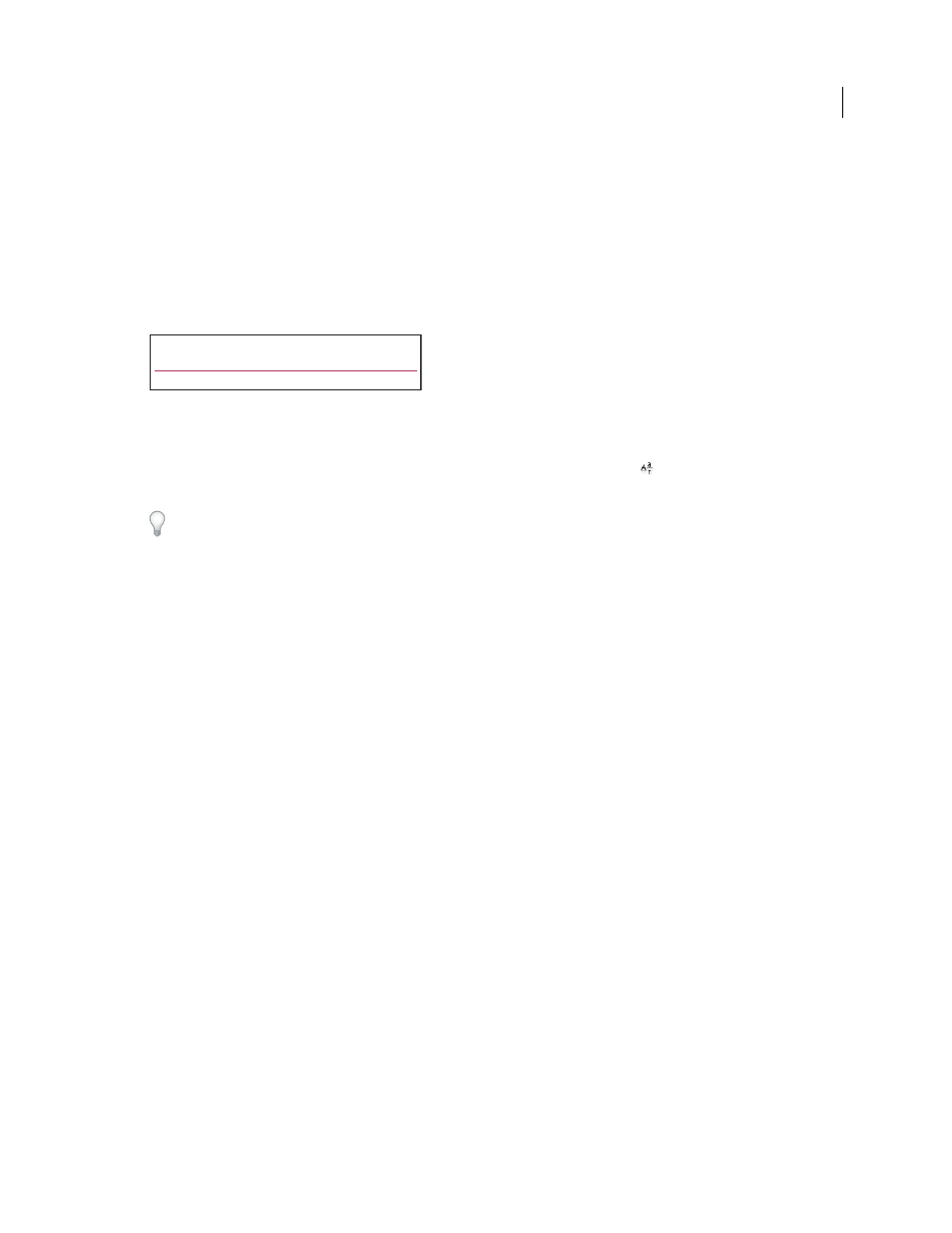Formatting characters, Apply baseline shift, Apply underline or strikethrough – Adobe InDesign CS4 User Manual
Page 241

233
USING INDESIGN CS4
Typography
Formatting characters
For a video tutorial on formatting characters, see
.
Apply baseline shift
Use Baseline Shift to move a selected character up or down relative to the baseline of the surrounding text. This option
is especially useful when you’re hand-setting fractions or adjusting the position of inline graphics.
Baseline shift values applied to text
1 Select text.
2 In the Character panel or Control panel, type a numeric value for Baseline Shift
. Positive values move the
character’s baseline above the baseline of the rest of the line; negative values move it below the baseline.
To increase or decrease the value, click in the Baseline Shift box, and then press the Up or Down Arrow key. Hold
down Shift while you press the Up or Down Arrow key to change the value in greater increments.
To change the default increment for baseline shift, specify a value for Baseline Shift in the Units & Increments section
of the Preferences dialog box.
Make characters superscript or subscript in a non-OpenType font
1 Select text.
2 Choose Superscript or Subscript in the Character panel menu or in the Control panel.
When you choose Superscript or Subscript, a predefined baseline shift value and type size are applied to the selected
text.
The values applied are percentages of the current font size and leading, and are based on settings in the Type
Preferences dialog box. These values do not appear in the Baseline Shift or Size boxes of the Character panel when you
select the text.
Note: You can change the default size and position of superscripts and subscripts using Advanced Type preferences.
See also
Apply OpenType font attributes
Apply underline or strikethrough
The default weight of an underline and strikethrough depends on the size of the type.
Apply underline or strikethrough
1 Select text.
2 Choose Underline or Strikethrough in the Character panel menu or the Control panel.
10
th
1/2 10
th
1
/
2
Updated 18 June 2009
